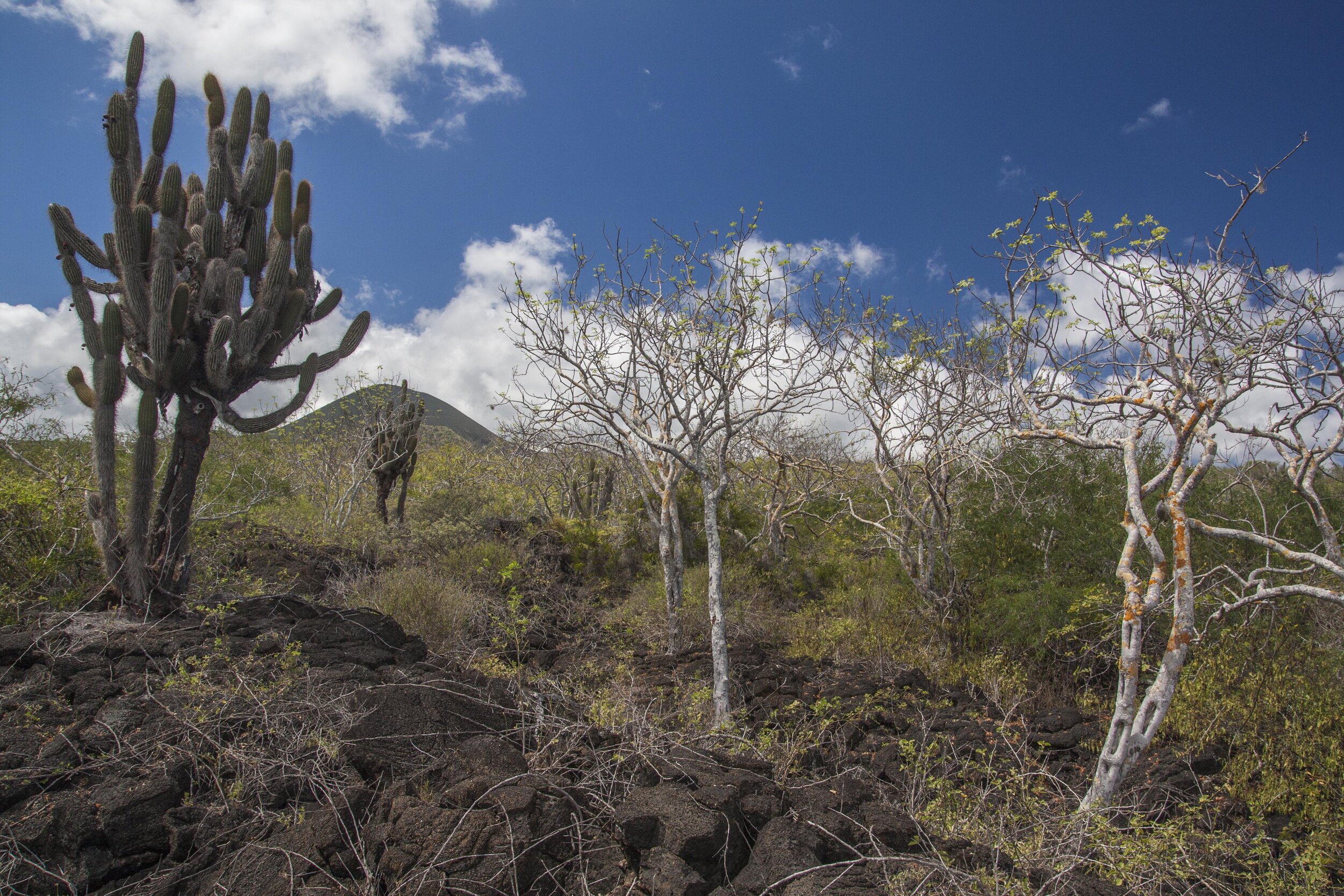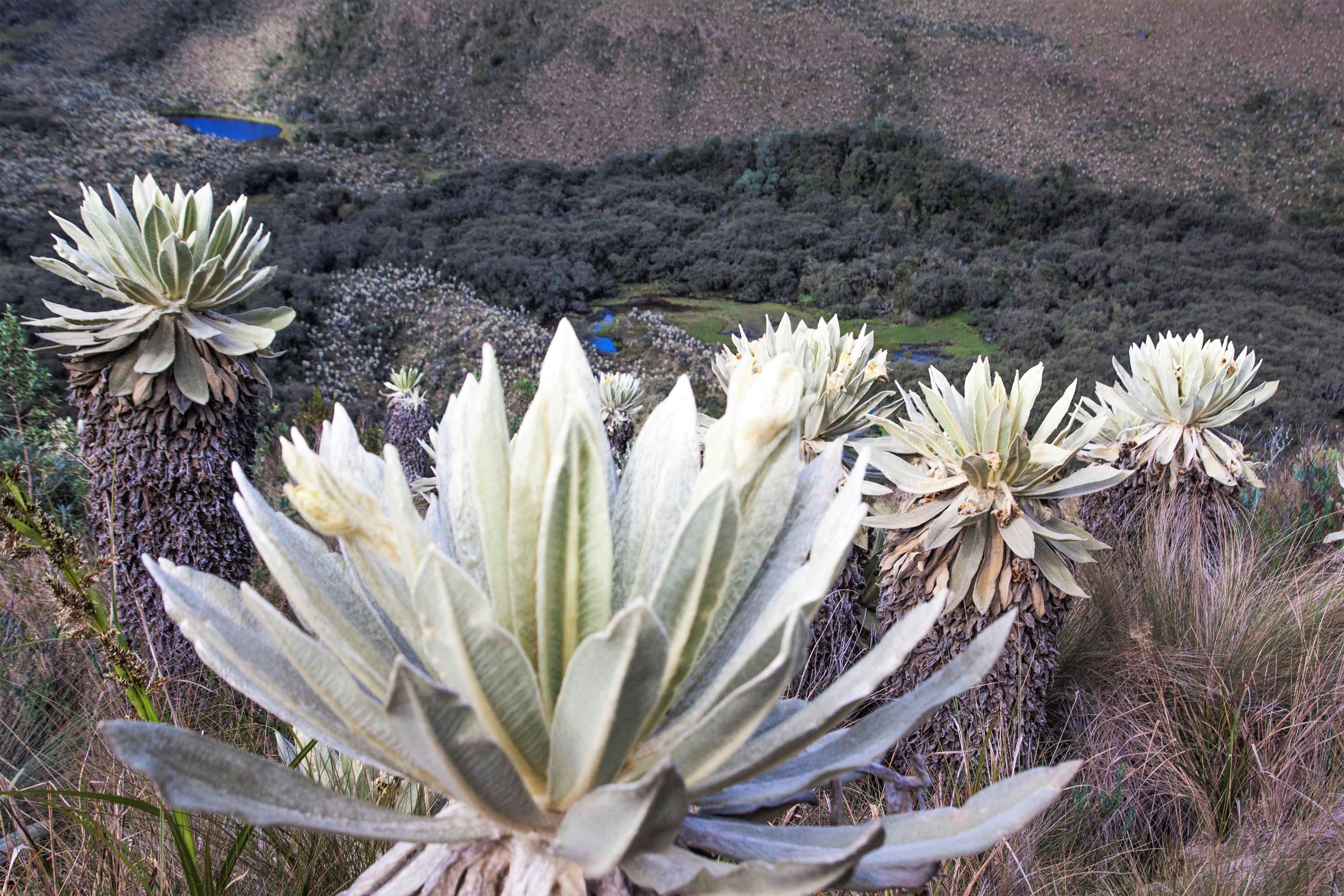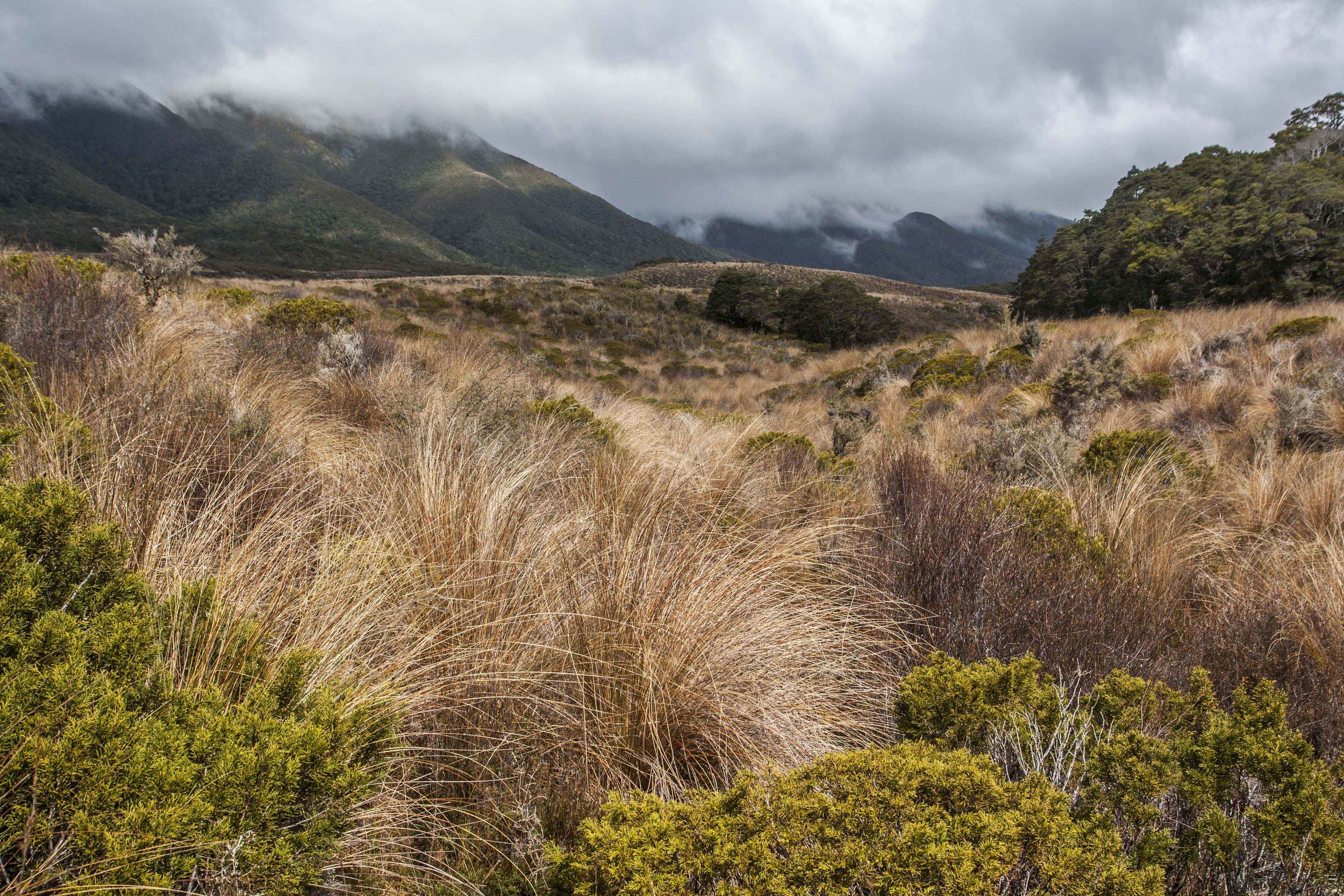Sometime during my 2017 travels around Iceland I had a dream about a cluster of volcanic cones and craters in an urban park. It was after my visit to Vestmannaeyjar (see my previous post) so was likely influenced by the volcanoes there, but these imaginary ones were closely hemmed in by city streets and set among manicured lawns.
Community Crater Cluster, watercolor on paper and oil pen on plexiglass, 15”x20.”
Community Crater Cluster, one of the works I began during my Iceland artist residency in the period when I’d started working in watercolor but not yet in the fractured style, grew out of that dream. I had to extrapolate a great deal and solidify what had been only very vague impressions—my geography-themed dreams can be really thorough but in this one I remember standing in only one spot, in the lower left corner of the park looking up toward the summit of the cone with the path crossing over it. The larger, “half volcano” at the far right is the only piece I borrowed directly from reality, specifically Vestmannaeyar, rather than some combination of the dream and later imagination. The baseball diamond, though, replaced what’s actually a golf course, being a better fit for the radial form of the crater.
Entering the “half volcano” on Vestmannaeyjar.
This work was the basis for a newer one, Community Crater Cluster II, which intersperses landscape views with bird’s-eye fragments as in all my recent worldviews. Except for the volcano taken from Vestmannaeyjar, obviously I didn’t have any of my own photography to work from, but luckily I could overlay my mental images on some photos of my hilly San Francisco neighborhood to set up somewhat realistic perspectives. (Though given that it’s all based on a dream, I still allowed myself some liberties there.) The central fragment, with the wrought-iron fence and the long stairway up to the crater, represents the view I remember from the dream—from what might’ve been a cemetery at the base of the volcano. The overall composition, made up of fragments that are more triangular than I typically use, was inspired by the volcanic cones as well as the concept of “view cones” (representing the direction and extent of views from particular vantage points on a map.)
Community Crater Cluster II, watercolor on paper, 36”x45.”
Village Volcano is another work, on a similar urban park theme, that was inspired by a dream—this one a few weeks before leaving on the Iceland trip when I must’ve already had volcanoes in my head. I did a lot more exploration in this dream, to the extent that I had a nearly complete park designed in my mind when I went to put in on paper (also during the residency). In contrast to the first dream, in this case I remember the single crater being hard to find, surrounded by relatively gentle slopes (nearly flat on the left side) rather than situated at the top of a cone, and competing in prominence with a dry, rocky canyon that must’ve been more influenced by California scenery. And, not only is the crater juxtaposed with urban elements, like sports fields, as in other examples I’ve talked about; there’s even architecture built right into the crater walls, as mundane as a food court/shopping center if I remembered it right. So the urban-wild interface in this case is accentuated less by a striking overall contrast between urban and volcanic landscapes than by the element of surprise created by intermingled elements of both.
Village Volcano, watercolor on paper and oil pen on plexiglass, 15”x20.”
As with Community Crater Cluster my plan is to re-interpret Village Volcano in the fractured style. But I’m thinking that, for the first time since leaving the plexiglass overlays behind, I might experiment with incorporating the topographical lines (with pen directly on paper). Given the gentle slopes, it would otherwise be too hard to read the radial form of the volcano. Stay tuned!
Darren


























































































































































































































